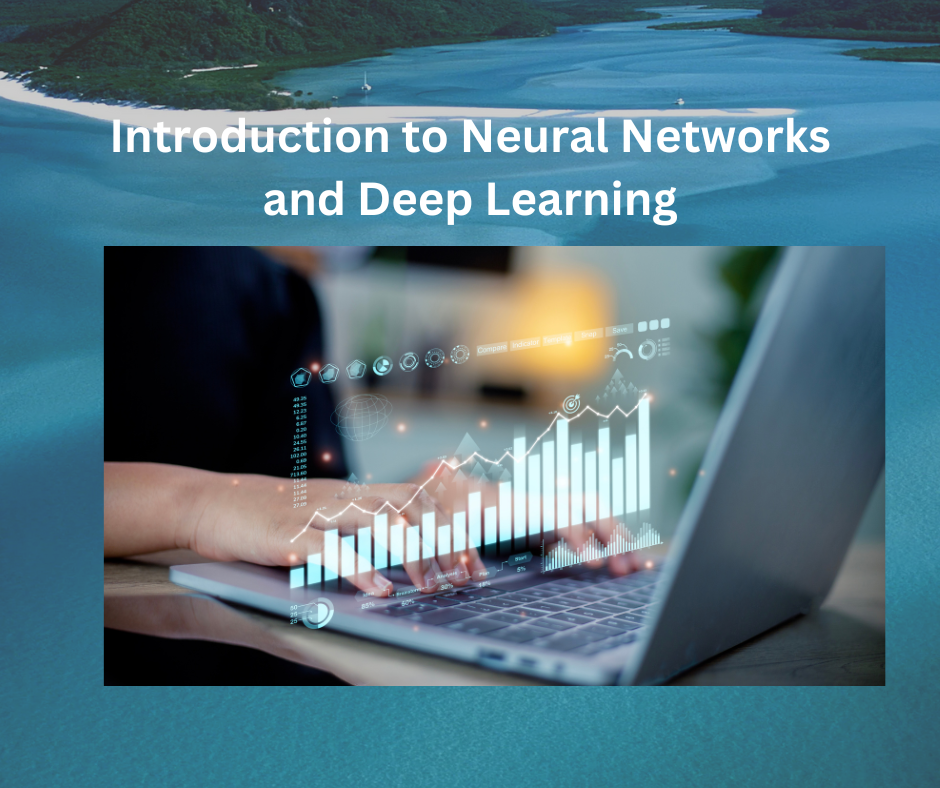Introduction to Neural Networks and Deep Learning
 Ruhi Parveen
Ruhi Parveen
Neural networks and deep learning have revolutionized the field of artificial intelligence (AI) and machine learning (ML), powering advancements in areas such as image recognition, natural language processing, and autonomous driving. This guide provides an introduction to these concepts, explaining their foundations, how they work, and their applications.
What are Neural Networks?
Neural networks are computational models inspired by the human brain. They consist of interconnected nodes, or neurons, organized into layers. Neural networks can learn complex patterns and make decisions based on the data they process.
Key Components of Neural Networks
Neurons: Basic units that receive input, process it, and produce output.
Layers: Groups of neurons, typically organized into:
Input Layer: Receives the initial data.
Hidden Layers: Intermediate layers that process data.
Output Layer: Produces the final result.
Weights: Parameters that adjust the input signal's strength.
Biases: Additional parameters that adjust the input independently of the weights.
Activation Functions: Mathematical functions applied to the input of each neuron to introduce non-linearity.
How Neural Networks Work
Neural networks learn through a process called training, where they adjust their weights and biases based on the error of their predictions. This process involves several steps:
Forward Propagation: Input data is passed through the network, layer by layer, until it reaches the output layer.
Loss Calculation: The network's output is compared to the actual result using a loss function, which measures the error.
Backpropagation: The error is propagated back through the network, adjusting weights and biases to minimize the loss.
Iteration: This process is repeated for many iterations until the network's predictions are sufficiently accurate.
What is Deep Learning?
These networks can model complex patterns and relationships in data, making them highly effective for tasks such as image and speech recognition.
Characteristics of Deep Learning
Multiple Layers: Deep networks have numerous hidden layers, enabling them to learn intricate patterns.
Large Datasets: Deep learning models require large amounts of data to learn effectively.
High Computational Power: Training deep networks often requires significant computational resources, typically involving GPUs or TPUs.
Advantages of Deep Learning
Automatic Feature Extraction: Unlike traditional machine learning, deep learning models can automatically extract features from raw data, eliminating the need for manual feature engineering.
Scalability: Deep learning models can handle large-scale data and complex tasks.
Versatility: They can be applied to a wide range of applications, from computer vision to natural language processing.
Types of Neural Networks
1. Feedforward Neural Networks (FNNs)
FNNs are the simplest type of neural network, where connections between nodes do not form cycles.
2. Recurrent Neural Networks (RNNs)
RNNs are used for sequential data, such as time series or text.
3. Long Short-Term Memory Networks (LSTMs)
LSTMs are a type of RNN designed to overcome the limitations of traditional RNNs, such as the vanishing gradient problem. They are effective at learning long-term dependencies in data.
4. Generative Adversarial Networks (GANs)
GANs consist of two networks, a generator and a discriminator, that compete with each other. GANs are used for generating realistic data, such as images or videos.
Applications of Neural Networks and Deep Learning
1. Image Recognition
Neural networks, particularly CNNs, have achieved state-of-the-art performance in image classification, object detection, and facial recognition. Applications include medical image analysis, autonomous driving, and security systems.
2. Natural Language Processing (NLP)
Deep learning models, such as RNNs and transformers, are used for language translation, sentiment analysis, and speech recognition. Applications include chatbots, virtual assistants, and language translation services.
3. Healthcare
Neural networks are used for diagnosing diseases, predicting patient outcomes, and personalizing treatment plans.
4. Finance
In finance, neural networks are used for stock market prediction, fraud detection, and risk assessment. Deep learning models can analyze large volumes of financial data to identify patterns and trends.
5. Gaming
Deep learning has been used to develop AI that can play complex games at a superhuman level. Notable examples include AlphaGo and AlphaZero, which have mastered games like Go, chess, and shogi.
Challenges and Future Directions
Challenges
Data Requirements: Deep learning models require large amounts of labeled data, which can be difficult and expensive to obtain.
Computational Resources: Training deep networks requires significant computational power, which may not be accessible to all practitioners.
Interpretability: Deep learning models are often seen as black boxes, making it difficult to understand how they make decisions.
Overfitting: Deep networks can overfit to training data, reducing their generalizability to new data.
Future Directions
Explainable AI (XAI): Developing methods to make deep learning models more interpretable and transparent.
Transfer Learning: Using pre-trained models on new tasks to reduce data and computational requirements.
Federated Learning: Training models on decentralized data to enhance privacy and security.
Edge Computing: Deploying deep learning models on edge devices, such as smartphones and IoT devices, to enable real-time inference.
Conclusion
Neural networks and deep learning have transformed the field of artificial intelligence, enabling breakthroughs in various domains. By understanding the fundamentals of neural networks, the characteristics of deep learning, and their diverse applications, you can appreciate the power and potential of these technologies. To harness these advancements, enrolling in a Data Science Training Course in Delhi, Noida, Mumbai, Indore, and other parts of India can provide you with the necessary skills and knowledge. As research and development continue, we can expect even more innovative and impactful applications of neural networks and deep learning in the future.
Subscribe to my newsletter
Read articles from Ruhi Parveen directly inside your inbox. Subscribe to the newsletter, and don't miss out.
Written by

Ruhi Parveen
Ruhi Parveen
I am a Digital Marketer and Content Marketing Specialist, I enjoy technical and non-technical writing. I enjoy learning something new.